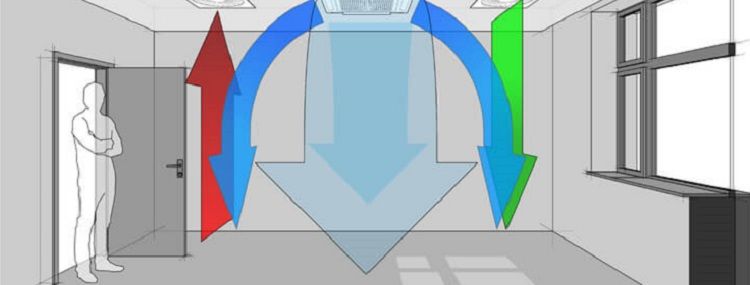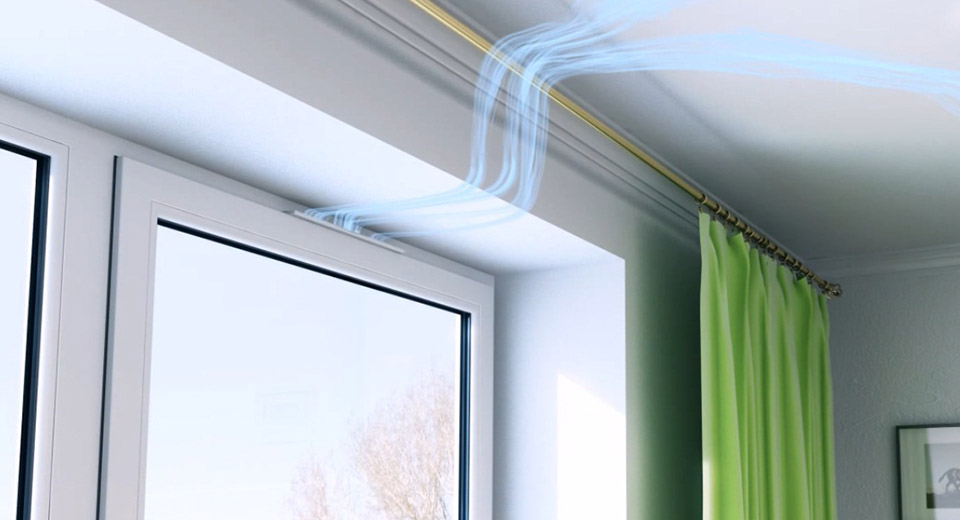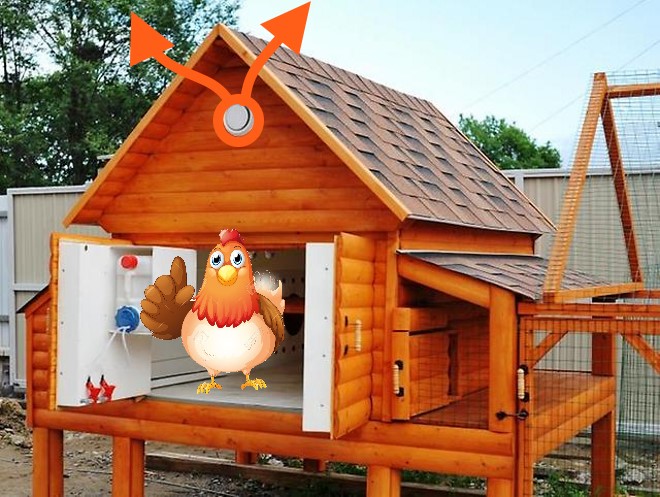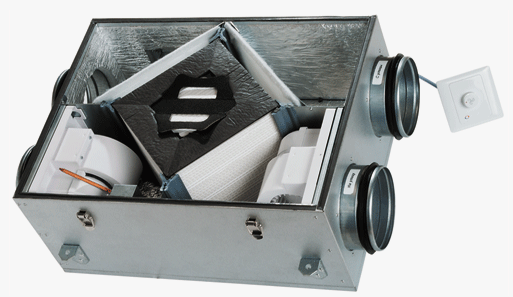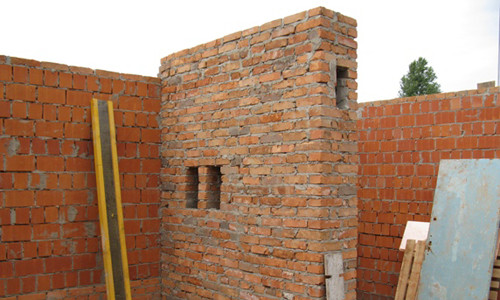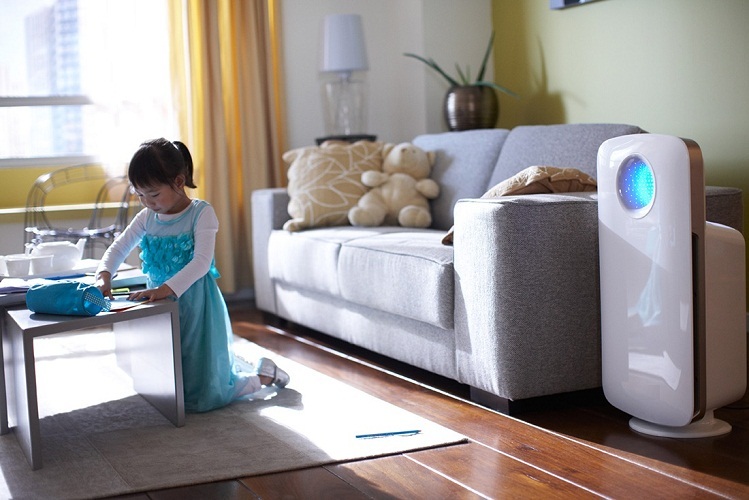Installation of industrial ventilation is a job for professionals that requires special knowledge and skills. But you can provide an apartment or a private house with fresh air on your own, because the services of craftsmen are quite expensive. We will give useful tips to help you install ventilation in an apartment or cottage, outline the procedure for work and suggest which tools are best to use.
Ventilation system selection
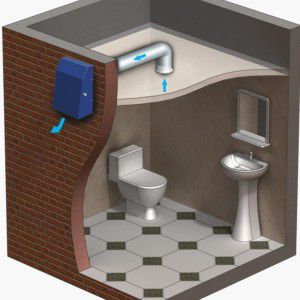
The installation of ventilation in the house is preceded by settlement work. It is necessary to decide on the functionality of the equipment, and then choose the right one. Ideally, this is done by the designer based on the wishes of the client.
There are several options for installing ventilation in the house:
- Combination of air conditioning and ventilation systems. A block for air cooling is also mounted to the ventilation system. It is installed in the duct or separately, it is interconnected with the compressor-condenser or external module of the air conditioner. Such a tandem allows not only to cool the supply air, but also to warm it. And this is another opportunity to save money on the installation of ventilation in the house.
If the air is set in motion by both the ventilation and the indoor unit of the air conditioner, the systems are mounted separately.
- Combination of heating and ventilation. An excellent economical combination of ventilation installation for various premises. In the future, it will reduce energy consumption. After all, heat is extracted from the exhaust air by the recuperator. A stream of supply and exhaust air is simultaneously passed through the heat exchanger, which do not mix with each other. As a heating installation, ventilation with a recuperator is effective in the off-season; in frosty winter, the heat in the apartment will not be enough.
- Ventilation only. Depending on the system chosen: exhaust, supply or supply and exhaust, the installation of a ventilation system can be quite simple or quite laborious.
Calculating the cost of the ventilation system

To calculate how much it will cost to install a ventilation system, it is necessary to take into account all possible installation costs. If the work is carried out by specialists, the amount increases significantly. The main attention should be paid to the organization of the removal of dirty air from the house. Therefore, most of the costs for installing ventilation in production will be related to the quality and quantity of HVAC equipment. The price of installation and installation of ventilation systems is influenced by:
- number of premises;
- mechanisms and equipment, their arrangement in the halls;
- the presence of fireplaces or a pool (for a cottage);
- condition and presence of natural ventilation.
The cost of the work depends on their complexity and deadlines. For example, when it is necessary to hang equipment at a height, you have to call industrial climbers or use specialized lifts. The approximate cost of installing industrial ventilation can be called by a professional consultant. He will take into account all the features of the room and suggest opportunities to save money.
Types and procedure of work when installing ventilation
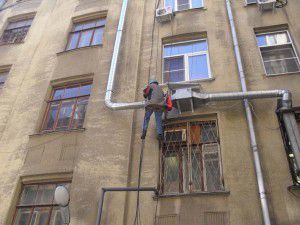
Installation of ventilation equipment is preceded by preparatory work:
- installation of supports and suspensions for fans;
- finishing of walls and ceilings in ventilation chambers;
- mounting passages for steel cables, chains and fan slings,
- cleaning of passages to the places of installation.
Industrial ventilation is installed inside and outside workshops. An approximate list of technological processes:
- installation of exhaust grilles and air intake devices;
- installation of distribution manifolds;
- laying of air ducts;
- installation of filters and silencers;
- installation and connection of fans and various sensors to air ducts;
- installation of automatic control units.
As a rule, air ducts are laid first. But if ventilation is installed in a small production facility, they can first install air supply and exhaust units. Ventilation units for large-scale production are mounted simultaneously with the construction of the facility. The whole process is divided into stages and zoned.
The ventilation control system is installed last when air ducts, sensors and units are connected in their places.
Ventilation installation rules
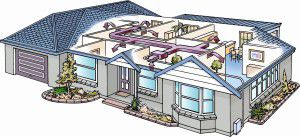
When performing work on the installation of industrial and domestic ventilation, the sequence of operations prescribed in the technical documentation is strictly followed. Before starting the installation of ventilation systems, the schemes are coordinated with the designer and architect, a schedule for the supply and installation of structural elements is drawn up.
Each important unit is checked and accepted separately after installation. Any piece of equipment must be accessible for maintenance and repair. At the end of the installation work, tests are carried out and the equipment is put into operation.
The best mode of functioning of the ventilation system is ensured when it is introduced into the object's dispatching system, for example, for cottages it is a “smart home” system.
Ventilation should be correctly implemented in the design and engineering systems of the building, not to interfere with the work of other equipment and technological operations.
DIY ventilation equipment installation
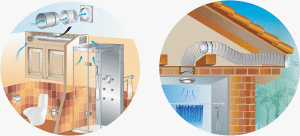
Installation of ventilation in an apartment most often comes down to reorganizing and improving the existing general system with natural draft. It is complemented by mechanical exhaust units and supply valves. Thus, combined ventilation is obtained at the output.
In private houses, ventilation of the supply and exhaust type with mechanical induction is more often installed.
This choice is explained by the larger area in comparison with the apartment and the abundance of utility rooms, in which it is also necessary to organize the movement of air.
Installing forced ventilation in an apartment or house has a number of advantages:
- ventilation works automatically;
- the calculated temperature and air velocity are maintained.
In a private house, a supply-type ventilation unit provides only an inflow of fresh, purified air of the required temperature. The outflow occurs naturally through chimneys, chimneys or specially equipped exhaust ducts.
An exhaust ventilation system in a private house forcibly draws out the exhaust air. In this case, the inflow is organized using valves.
If the owner decided to independently equip the ventilation, when choosing a technique, one should take into account:
- the size of the room;
- the number of residents;
- the purpose of the room (bedroom, nursery, kitchen);
- which side of the world the windows face;
- total glazing area.
Installation of a supply ventilation valve

One of the simple and effective solutions can be the installation of supply ventilation in the premises. First you need to choose exactly which rooms you want to supply fresh air to.In some cases, supply valves are installed in all rooms.
A convenient location for the supply valve is the gap between the heating radiator and the window sill. Here the valve will be completely invisible, and the air first enters the warm radiator and only then enters the room.
To install a supply valve, a hole of a suitable size should be made in the wall, which is indicated in the instructions (or a little larger for free pipe movement). A piece of the duct is cut off 1 cm longer than the thickness of the wall.
The pipe passage is angled outward at a slight angle to prevent rain and condensation from entering the duct.
From the side of the room, a soundproof box is put on the branch pipe and fixed to the wall. The outside is covered with a lattice with a net.
There are mechanical forced ventilation units for apartments. They are made in monoblock format, are compact and perfectly cope with the maintenance of one room. The air is heated before being supplied to the room, the intensity of the inflow is regulated.
Installation of an exhaust ventilation fan
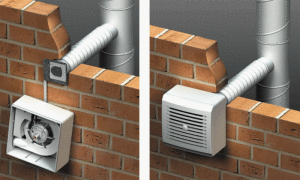
To organize exhaust ventilation, it is often enough to install a fan instead of grates in the kitchen or in the bathroom. The fan power should be selected depending on the size of the room and its purpose:
P = L * H * W * K,
Where L - the length of the room,H - the height of the room,W - the width of the room,K - the air exchange coefficient depends on the purpose of the room. For the kitchen 15 - 20, for the toilet 7, for the bathroom - 10. It is in these rooms that exhaust ventilation is most often needed, since the temperature and humidity in them are increased.
It is important not to overdo it with the power of the hood in order to maintain a normal balance of pressure inside and outside the house.
More details about various ventilation systems and their installation video:

